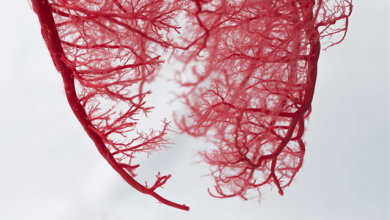Search results
Microvascular Complications and Outcome after Drug-eluting Stent Implantation in Diabetic Patients
Author(s):
Carlo Briguori
,
Antonio Colombo
Added:
3 years ago
Article
Author(s):
Andreas Seitz
,
Johanna McChord
,
Raffi Bekeredjian
,
et al
Added:
2 years ago
Author(s):
Joanna M Bilak
,
Uazman Alam
,
Christopher A Miller
,
et al
Added:
1 year ago
Author(s):
Mario Petretta
,
Pierluigi Costanzo
,
Alberto Cuocolo
Added:
3 years ago
Myocardial blood flow (MBF) must respond to changes in metabolic conditions and oxygen requests to meet the needs of myocytes, and autoregulation plays a mayor role in the control of coronary circulation.1–3 It has been demonstrated that, as a coronary artery is progressively narrowed, resting flow does not change at first, but maximal flow (achieved by injecting a vasodilator) decreases…
View more
Author(s):
Gaetano Antonio Lanza
Added:
3 years ago
Up to 50% of patients who undergo elective coronary angiography for stable chest pain symptoms that are mainly related to exercise and typical enough to suggest the presence of obstructive coronary artery disease (CAD) are found to have normal or near-normal coronary arteries.1 The mechanisms responsible for angina chest pain in these patients are heterogeneous; accordingly, their identification…
View more
Author(s):
Marie Mide Michelsen
,
Naja Dam Mygind
,
Daria Frestad
,
et al
Added:
3 years ago
Women have for many years been regarded as being at relatively low risk for the development of ischaemic heart disease (IHD).1,2 Recently this pattern has changed and cardiovascular disease (CVD) is now the leading cause of death for women in Europe.3,4 Under the age of 60 years acute coronary syndrome occurs 3–4 times more often in men; however, after the age of 75 years women represent the…
View more
Author(s):
Daniel Tze Yee Ang
,
Colin Berry
Added:
2 years ago
Author(s):
Morton J Kern
,
Katherine M Yu
Added:
3 years ago
Coronary artery disease (CAD), the most common cause of morbidity and mortality in the US, is frequently identified by coronary angiography. Decisions for treatment are often based on angiography alone, absent other clinical indicators for intervention. However, by angiography alone, conventional wisdom has suggested that a coronary stenosis is significant if there is at least a 50 % diameter…
View more
Author(s):
Alda Huqi
,
Giacinta Guarini
,
Doralisa Morrone
,
et al
Added:
3 years ago
Myocardial revascularisation in patients with stable chronic angina is performed with the aim of reducing cardiovascular death, reducing myocardial infarction (MI) and relieving angina symptoms. However, contrary to expectations, modern therapy with percutaneous coronary intervention (PCI) has not had a significant impact on hard outcomes.1–5 Indeed, as also summarised in a recently published…
View more
Author(s):
Gérard Finet
,
Gilles Rioufol
Added:
3 years ago
“Nothing comes to us except falsified and altered by our senses.”
Michel de Montaigne (1533–1592)
Coronary angiography (CA) has been performed in cardiology centres for more than 50 years. The diagnosis it provides soon became the gold standard in coronaropathy. It is a purely anatomic diagnosis, and this approach has made a deep mark on cardiology, although the need for a prior non-invasive…
View more











 « First
« First